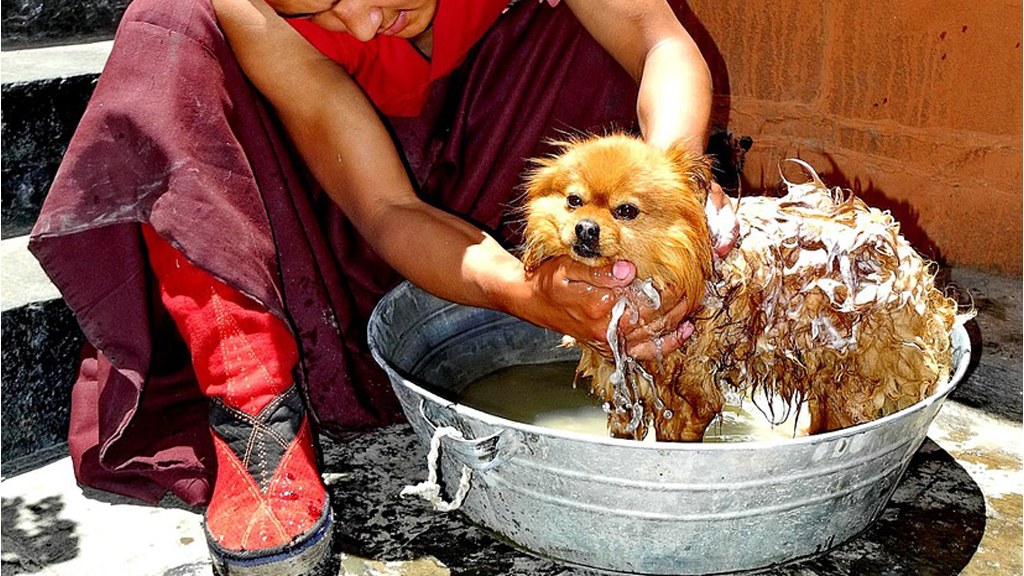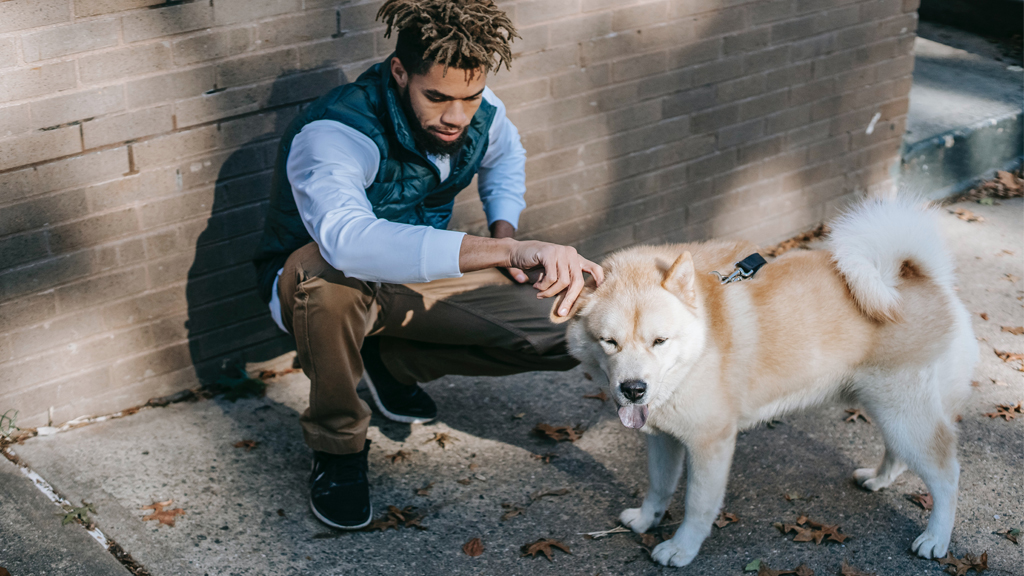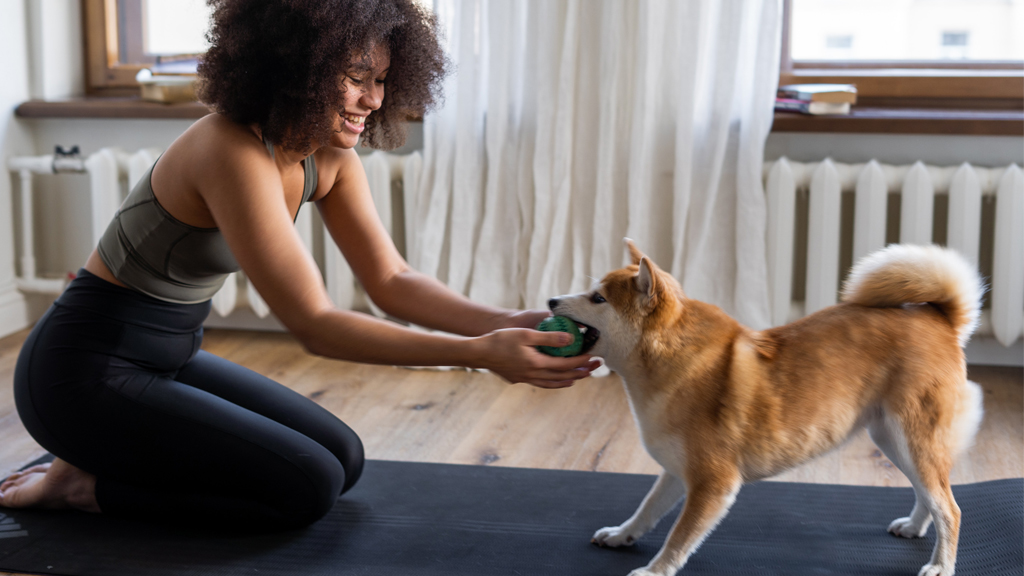Dogs are adorable creatures that bring a lot of joy to families with small children, and not only them. They are great friends and come in all kinds of sizes, which means they can thrive perfectly in apartments just as much as in houses with gardens.
However, having a furry friend in the house also has many shortcomings, in particular when you go out for a walk and collide with nature.
Especially with smaller breeds, being close to the ground makes them an easy target to all kinds of pests, like fleas and ticks, as well as different weeds that can get caught up in their fur, making it a nightmare to remove.
And even though ticks and grass stuck to the coat are easy to notice, fleas are microscopic and undetectable by the naked eye. This is why you need to pay extra attention to your pet. Here are a few simple steps to follow:
How to Remove Fleas on Your Dog
If you notice that your pooch scratches way too often than it should, chances are it has fleas building an empire inside the fur. It’s important to proceed with the removal as fast as possible, to avoid dermatitis and all kinds of other nasty diseases the creepy crawlies bring.
Here are the 4 simple steps you need to follow:
What do you need:
- Flea comb
- Flea shampoo
- Vacuum cleaner
And here’s how to proceed to remove the fleas from your dog and surroundings:
- Give your pet a bath using lukewarm water and the flea shampoo. First, wash the body and allow the fleas to gather on the head. Then shampoo the head as well, killing the remaining survivors.
- Use the flea comb to inspect your dog’s fur and remove any remaining eggs and flea poop (also known as “flea dirt”). Flea combs have very closely located teeth, so they let hair pass through, but everything else will get caught.
- Wash all your pet’s beddings and toys. This way you will eliminate any fleas and eggs that your dog left behind.
Clean the entire house thoroughly. Your dog walks all around the house, so there’s a chance of fleas hiding in the couch, bed, carpet, or any other furnished or cluttered area. Vacuum clean everything, mop and wipe all common surfaces and get rid of any unnecessary clutter.
How to Prevent Fleas From Choosing Your Dog
Fleas love dogs just like kids love ice cream. This is why you need to be vigilant at all times when you have dogs at home. By following these simple guidelines, you’ll be able to prevent fleas on your dogs on time and without risking a huge flea infestation in your house:
1. Inspect the Dog’s Fur Daily
It’s important to check your dog for fleas at least once a day, preferably after a walk. Observe closely for jumping fleas or small black dots, which are flea faeces or eggs. Red itchy spots are also a telltale sign that the little nasties may have settled in. Place the dog on your lap and gently start moving the fur aside, so you can examine the skin underneath it. Focus on the most common places fleas like to attack, like the head, the back and the stomach.
2. Regular Baths Are Also Important
Bathing your dog weekly is a must if you want to prevent a flea infestation. A quick washing of the paws may be enough after a walk, but your pooch also needs to refresh its fur regularly. Give your dog weekly baths using a shampoo formula specialized for killing fleas and ticks.
There are many chemical and organic options out there, ask your veterinarian which is the best one for your furry friend. Some gentle brands of dishwashing detergents can also work, but you need to read the labels carefully.
Saturate the fur with water, then scrub the shampoo in starting from the head, then work your way through the back and legs, and finish at the stomach and tail.
Don’t miss any spots, because flea eggs are extremely resilient and they need to be treated with the product directly. Leave the shampoo to work for the recommended amount of time, then rinse your pooch with water and dry it as usual.
3. Brush Your Dog Regularly
Regular brushing is mandatory when you have a longhaired pet, and advisably all dogs . Veterinarians recommend using a flea comb on your dog at least three times a week. It will not only help you detect the fleas but also remove them on time if you find any.
Just like with the bathing, start combing at the head and work your way to the back and the legs. Leave the belly for last, as this is the place fleas usually run off to when they feel endangered.
Stroke the fur a few times, then place the comb into a bowl of soapy water and push on the prongs to release any caught fleas. They will quickly drown and won’t cause any more discomfort to your pet.
4. Provide a Clean Surrounding
Except for regular bathing, your dog will also need a clean environment to prevent any future flea infestations. This means the bedding it sleeps in needs to be laundered regularly – a few times a week is more than enough to kill any fleas and eggs that haven’t hatched yet. Regular washing of all the toys and dog clothes is also pivotal to avoid a re-infestation.
Regular vacuuming and keeping the entire house clean also helps prevent any pests from nesting in there, including fleas. Once they arrive on your dog they can also easily hide in carpeted surfaces and upholstered furniture, so you need to take regular care of these too.
After each vacuuming, remember to get rid of the filter bag or disinfect the container with hot soapy water to kill any potential eggs.
5. Keep Your Dog Healthy
Keep your dog healthy with a proper diet, adequate water intake and plenty of exercises. Most pests like to attack and feed on sickly pets. Active and fit dogs discourage fleas from infesting it. So, by making sure your pooch is healthy and happy, you are providing it with its best chance against the invaders.
6. Invest in a Pest-repellent Collar
Veterinarians sell all kinds of products that repel fleas and ticks and will keep your dog safe during walks. They usually come in two forms – a collar infused with a pest-repellent chemical, or drops that you have to place on the back of your dog. Both products have their pros and cons, and they usually provide between 3-6 months of protection.
Author bio: My name is Alexander Crawley and I’m an entomology consultant for Fantastic Pest Control. As a psychology graduate, I got bored after years of studying humans and found my true fascination – bugs. In my spare time, I like to read and write about insects, help people solve their pest problems.





Way cool! Some very valid points! I appreciate you writing this post and also the rest of the website is very good. Parker Learman